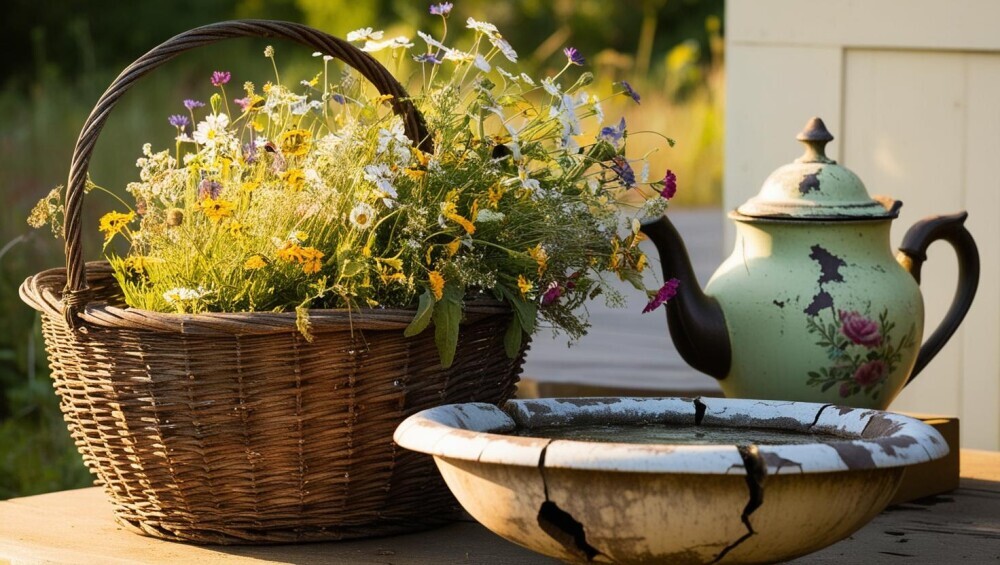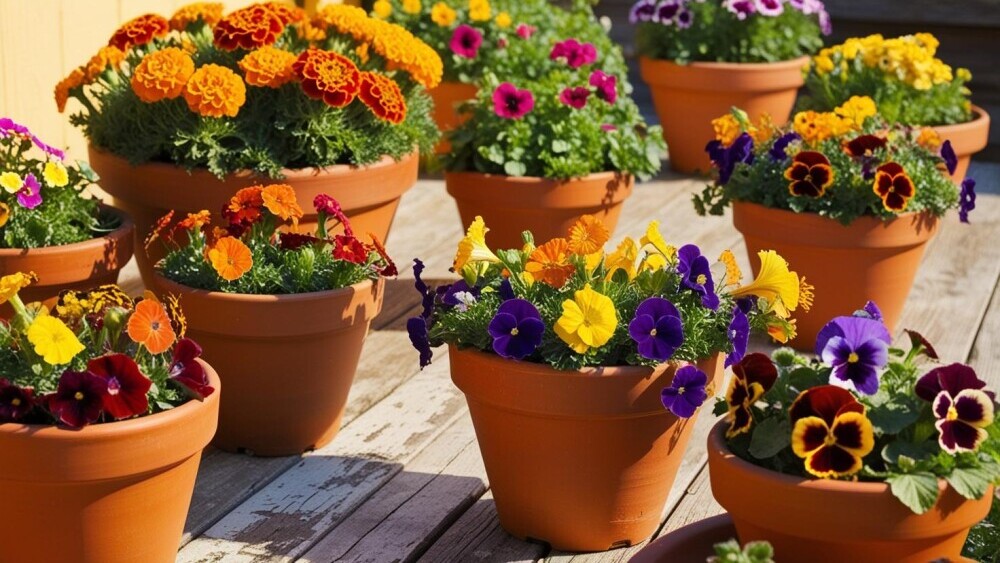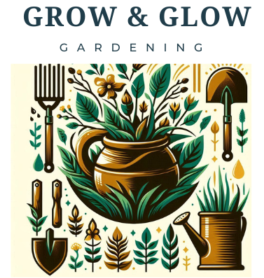Starting a container garden doesn’t mean you gotta break the bank. Let’s chat about some creative ways to use everyday items. Look around your house—old buckets, cans, or even worn-out shoes can make unique and budget-friendly pots. It’s all about looking beyond the ordinary and seeing the potential in what you already have.
When it comes to filling those unique containers, soil can get pricey, but there are ways to cut costs. Most gardening centers offer discounted soil if you’re open to buying in bulk, or mixing your own with a mix of coco peat, organic waste, and local soil can be both cost-effective and nourishing for your plants.
Thrift stores and yard sales are treasure troves for the frugal gardener. Old baskets, teapots, and even cracked bird baths can be repurposed as plant holders. It’s amazing what a quick clean-up and a coat of paint can do to transform an object’s look and function.
 So there you have it—the scoop on getting your container garden started without emptying your wallet. Remember, the cheapest way to grow is often right under your nose, using things you’d usually toss out.
So there you have it—the scoop on getting your container garden started without emptying your wallet. Remember, the cheapest way to grow is often right under your nose, using things you’d usually toss out.
Designing Your Container Garden: Layouts That Maximize Space and Beauty
Designing a container garden is all about making the most of the space you have and creating something pleasing to the eye. Start by scoping out your space. Identifying the sunniest spots is key; plants need that big ball of fire in the sky to grow happy and strong.
Think vertically! If you’re tight on ground space, shelves, ladders, or even hanging baskets can be lifesavers. Not only do these tactics save precious floor space, but they also allow you to add levels to your garden, making it visually interesting and lush.
Arranging your containers can be like creating an art piece. Taller plants give height, bushy greens add bulk, and trailing plants spill over edges for movement and drama. A taller plant in the back or center can act like a focal point, drawing the eye in. From there, work your way down in height to the edges with medium and low growers.
Don’t forget to group plants with similar sunlight and water needs. This makes taking care of your little green friends easier while ensuring everyone thrives. Plus, mixing different textures and colors creates a dynamic look that’s sure to impress.
In a nutshell, layout isn’t just about cramming containers into a space—it’s about balance, functionality, and harnessing nature’s brilliance right in your corner of the world.
Plant Selection Made Easy: The Best Choices for Your Container Garden
Picking the right plants is crucial for a thriving container garden. Some plants are just made for small spaces. Herbs like basil, chives, and mint not only grow nicely in containers but are super handy to have around if you enjoy cooking.
When it comes to veggies, cherry tomatoes, radishes, and lettuce do well confined to pots. They don’t need a lot of space to produce some satisfying harvests. Flowers, too, can shine in containers. Marigolds, petunias, and pansies add pops of color and are relatively easy to maintain.
 Think about plant compatibility—those with similar needs tend to grow happily together. Avoid pairing cacti with moisture-loving plants like ferns. Compatibility ensures that everyone’s getting the right care and conditions they crave.
Think about plant compatibility—those with similar needs tend to grow happily together. Avoid pairing cacti with moisture-loving plants like ferns. Compatibility ensures that everyone’s getting the right care and conditions they crave.
Remember the seasons. Opt for seasonal plants to keep your garden interesting all year round—a few bulbs for spring color, summer annuals, and hardy herbs during cooler months.
Making smart plant choices isn’t just about beauty. It’s also about creating a garden that requires less fuss, giving you more time to enjoy the fruits (or flowers!) of your labor.
Avoiding Common Pitfalls: Secrets to Thriving Container Plants
Even seasoned gardeners can stumble over some common container gardening pitfalls, but steering clear of these errors can lead to a flourishing garden. One of the biggest traps is overwatering. Plants need water, but many newbies go overboard, drowning roots that need air just as much as they need moisture. So, feel your soil—if it’s sticking to your fingers, you can hold off on the next watering.
On the flip side, underwatering is, of course, the other extreme. Especially in hotter months, container plants might need a bit more of a drink, given that pots tend to dry out faster than garden beds. Keep a regular watering schedule and adjust as temperatures shift.
Choosing the right pot is another key to success. Drainage is crucial, so avoid containers without holes at the bottom. Without proper drainage, roots can rot, putting an end to all your gardening dreams.
Fertilization is also a must. Containers restrict root growth, and nutrients can get depleted faster than in beds. A balanced liquid fertilizer every couple of weeks during the growing season can work wonders.
Finally, keep those snippers handy for pruning. Removing dead leaves and shaping plants encourages new growth and keeps your garden looking fresh. With these tips, you’ll avoid the common mistakes and keep your container garden green and thriving.

Looking at your article, it’s clear to me that you know a lot more about gardening than I do. I’m very much a fan of any plants I’m growing being actually useful, meaning I can use them in some way for either cooking, helping out pollinators, or some other reason that has actually benefited my life, not just to look pretty. That being said, are there any taller plants that you’d recommend we could grow in a pot that provide benefits for cooking or some other reason that you could use around the house? I’m interested to hear your thoughts on that.
I am thrilled by your words; however, when it comes to gardening or otherwise, any plants require lots of time and patience, and the way you analyze them. will give you a better understanding of each plant’s needs, and I am glad to hear you are a fan of any plants you grow, and you find other meaningful ways of using them, rather than for cooking purposes. like helping out pollinators or some other reason that benefits your life.
1. Tomatoes are container-friendly if you choose a determinate variety; they’ll grow upright and can often reach quite a height. Plus, nothing beats homegrown tomatoes in salad or sauce!
2. Sweet Corn: Yes, you can grow corn in containers! It’s not only useful for cooking (think corn on the cob!) but also provides that vertical element to your garden setup.
3. Stakes of Peppers: Bell peppers or hot peppers can grow tall and are super versatile in the kitchen.
4. Nasturtiums: Not only are these stunning flowers edible, but they also attract pollinators to your garden! Their peppery leaves and colorful blossoms can jazz up salads or be used as a garnish.
5. Sunflowers: While they’re primarily known for their beauty, sunflower seeds are a great snack and feed local birds! They’re fun and can add some height to your garden.
Try combining these plants in your container garden for an interesting height variation and maximize both aesthetics and utility! Happy gardening, and I can’t wait to hear about your successes!
Garfield